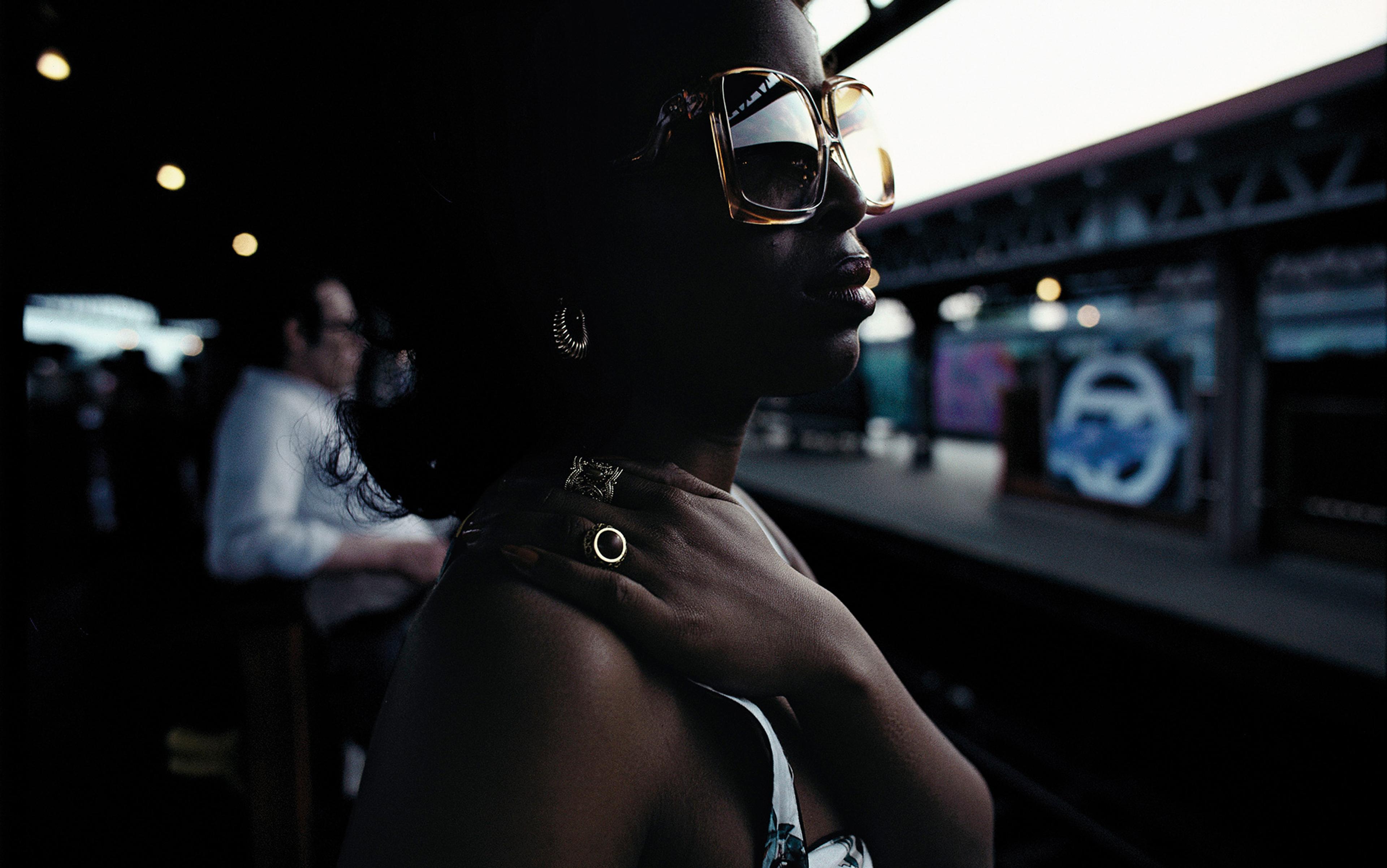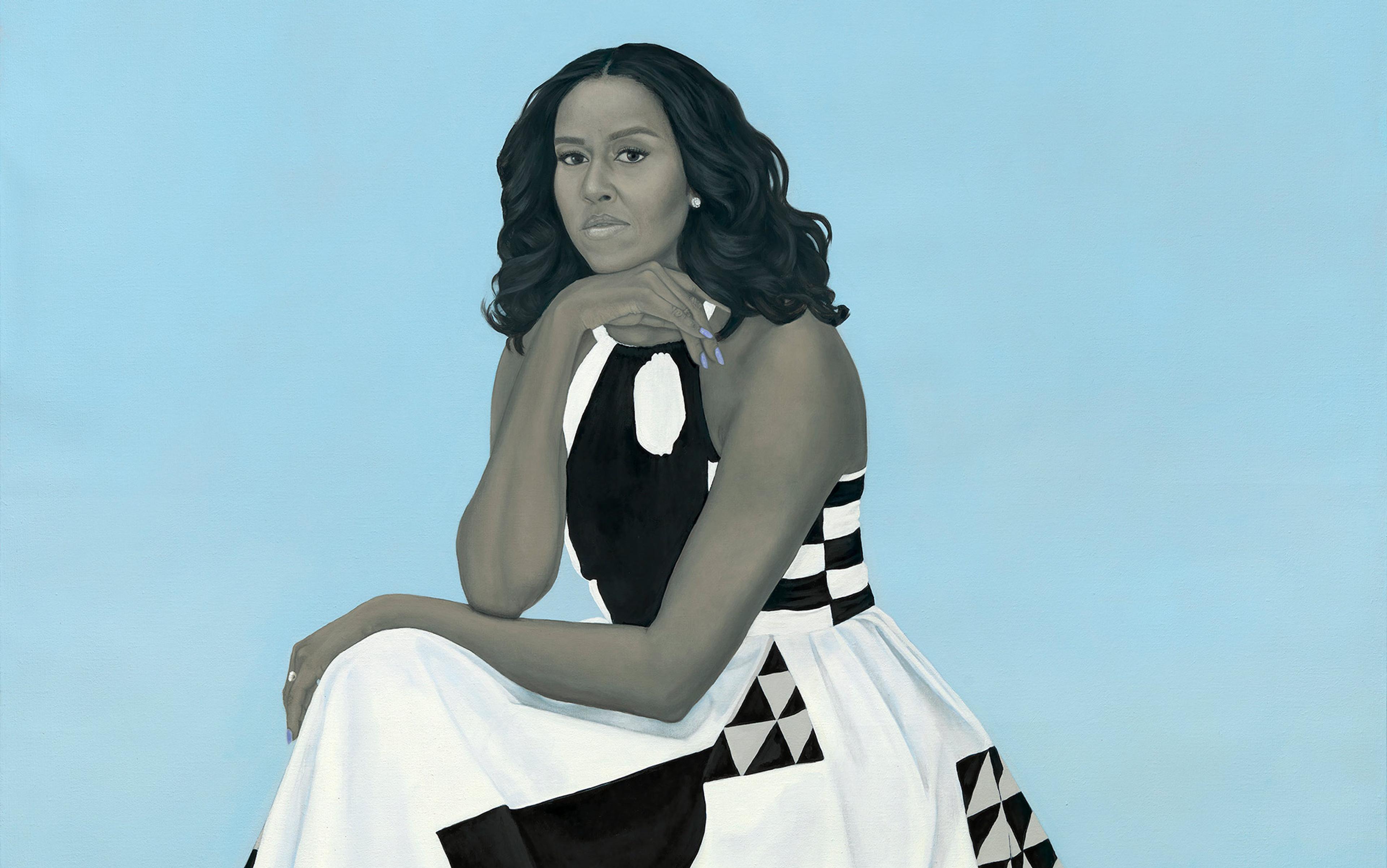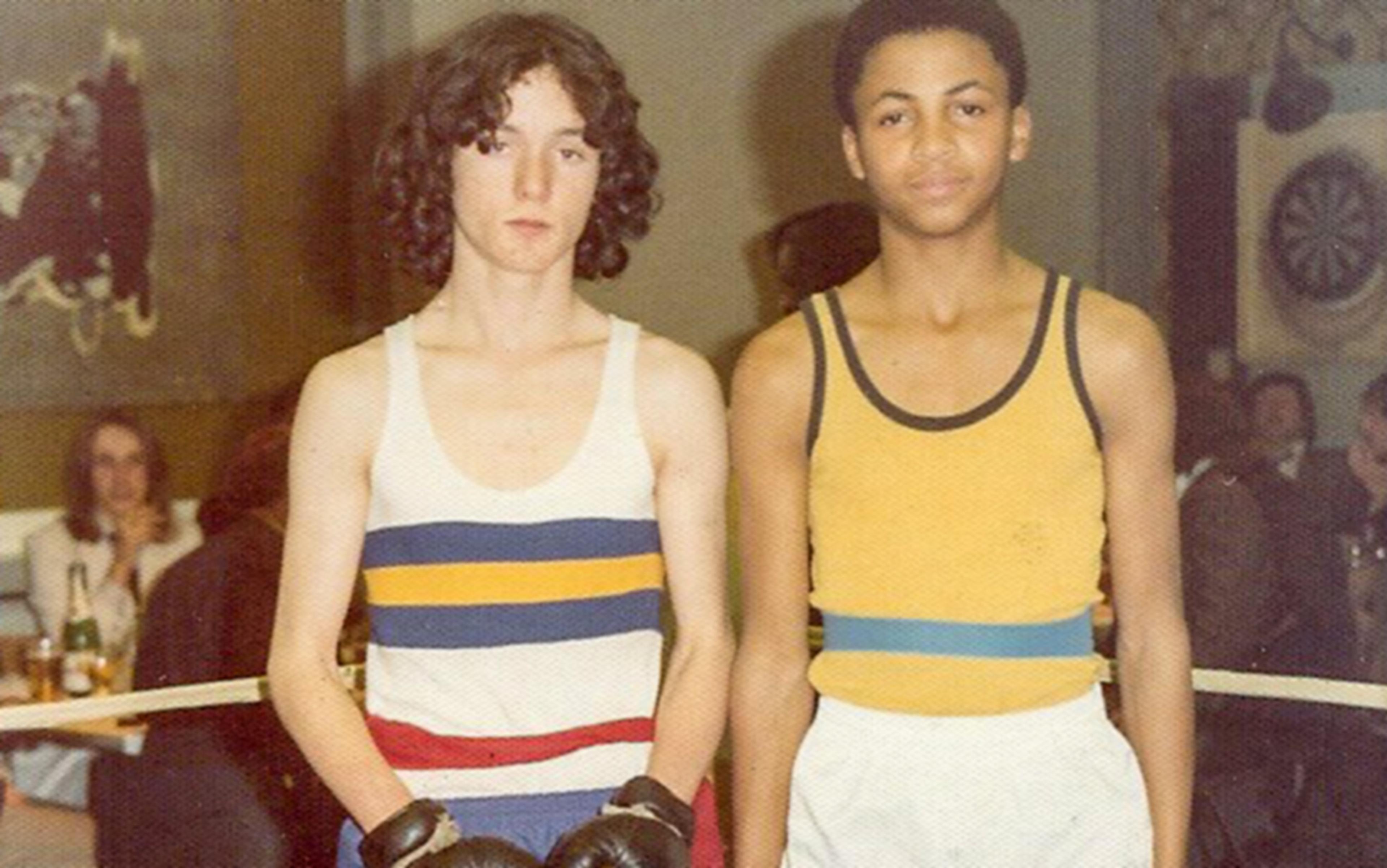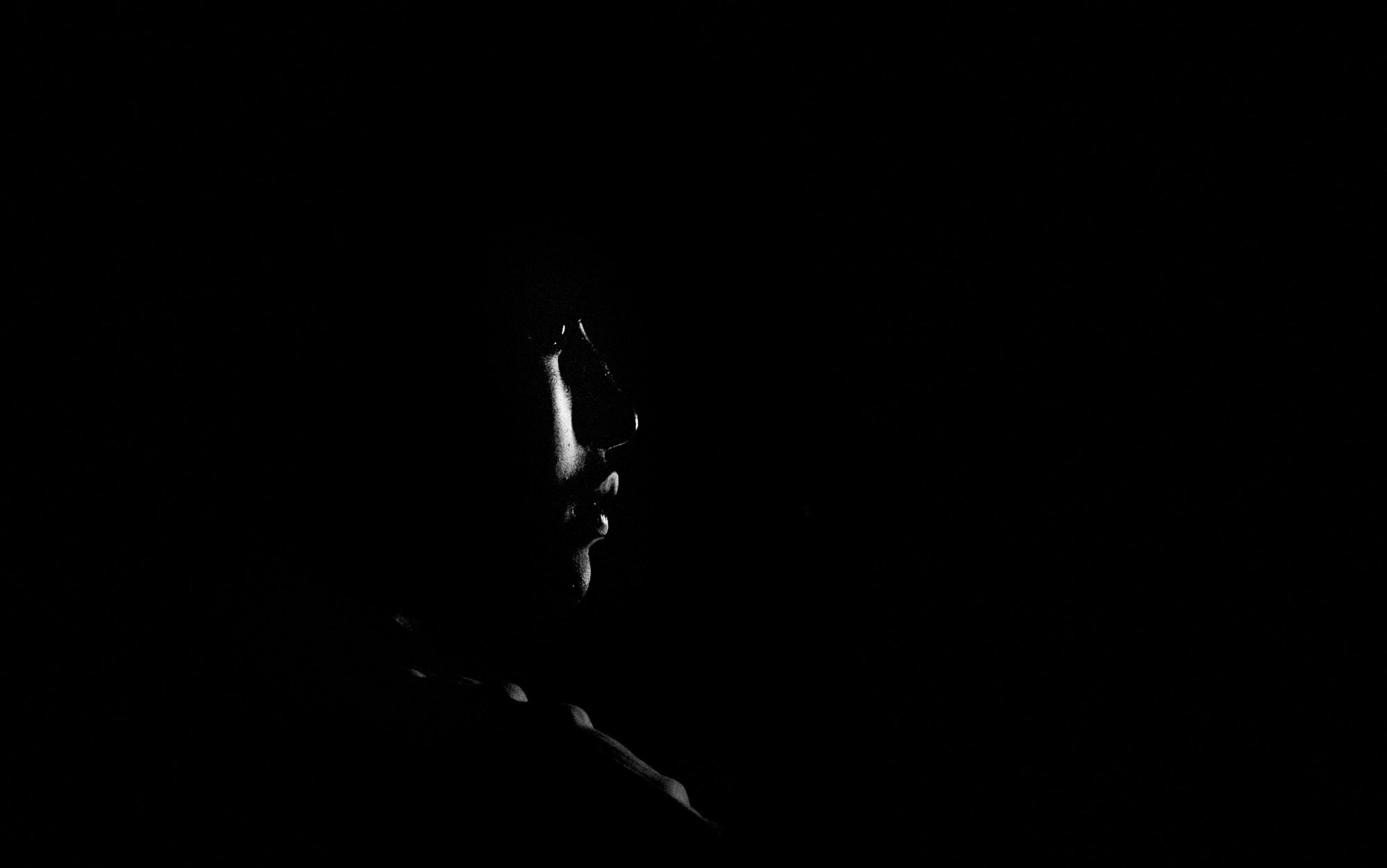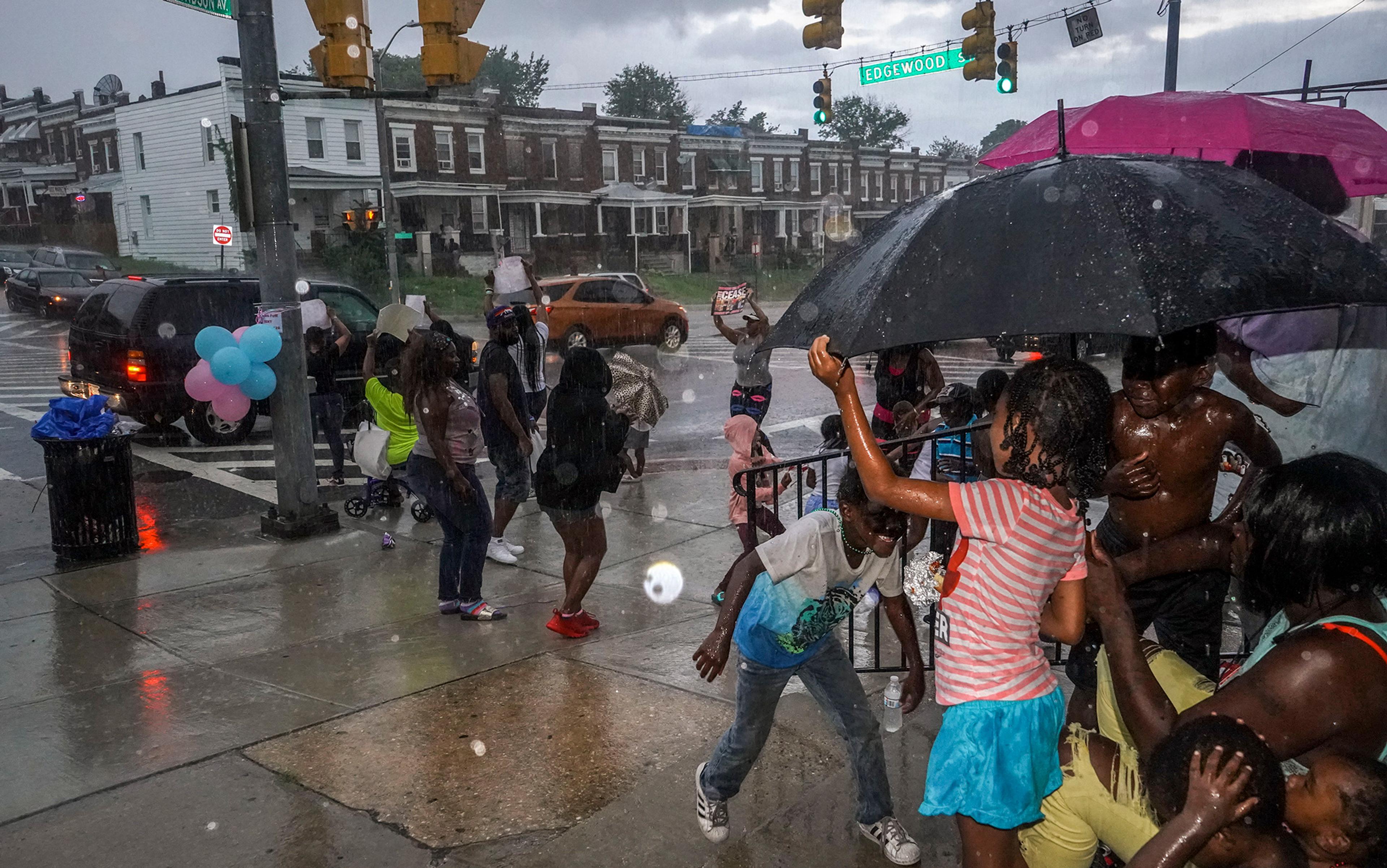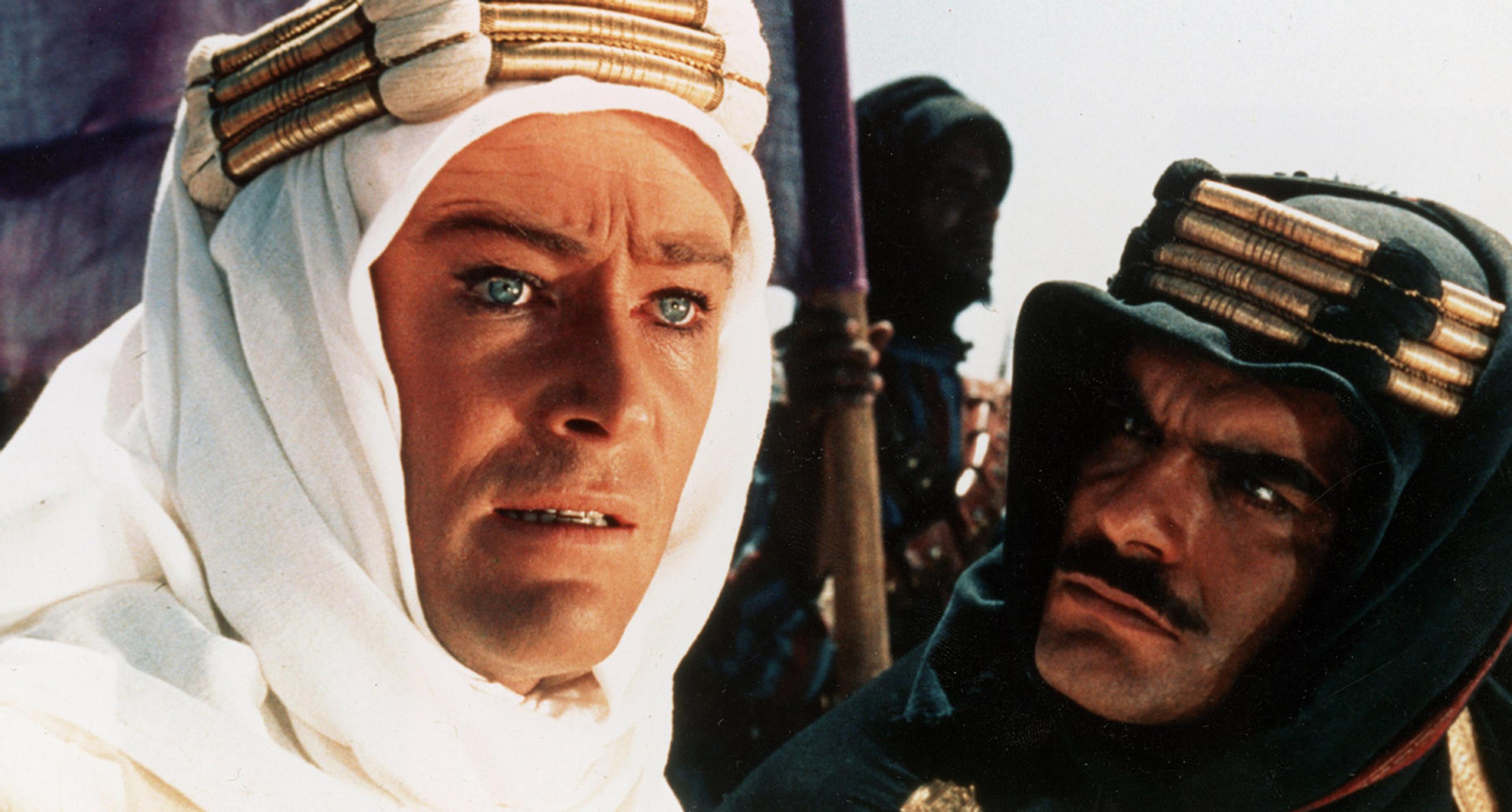As an American born to Nigerian parents, I was raised primarily in the United States, the United Kingdom and Côte d’Ivoire. The women in my family – my mother, grandmother and aunts – are formidable characters but, throughout my childhood, stories about their physical beauty preceded them. In the various circles of family, friends and community, I grew up constantly hearing how beautiful these women were who surrounded me. I cannot recall a time when I haven’t looked at them without also thinking about their legendary beauty. The narrative was so ingrained in my childhood that it soon morphed from any possibility of subjective opinion to plain fact: I understood that equating a black woman with undeniable beauty was the norm not the exception.
But because I didn’t grow up in a bubble, there were other influences by which I gauged my childhood understanding of beauty, and these more culturally sanctioned influences, promulgated on television and in magazines, had their own effects. Though I’d been told that I looked like my mother and grandmother, I was always examining my lips in the mirror, noting their fullness and plumpness, and wishing they were thinner. As a child, I thought small, thin lips were part of what made a face beautiful. In my engagement with the wider Western world, I was growing to understand, subconsciously and in countless ways, that by mainstream standards the features of black girls and women were not regular cues that pointed to the beautiful, and certainly not to the sort of beauty that demanded attention and care.
Having now lived in multiple countries on multiple continents, I’ve begun to wonder about beauty’s place in the sociopolitical discourse around belonging, and ethnic or cultural difference. How does an understanding of beauty intersect with notions of race and justice? What cues us to esteem something as beautiful, and are these cues inherent? Or, are there culturally mandated margins of beauty that lead us to make countless daily judgments about what is or is not beautiful? Can the ways we learn to recognise beauty have a potentially lifesaving impact on how we learn to care for bodies that don’t look like ours? These are some of the questions at the forefront of my mind as I think about being a black woman in the world.
History has much to account for. In 1810, Saartjie Baartman was taken from her home in South Africa and brought to Europe, where she was put on display to showcase her naked body and specifically her steatopygia, or protruding buttocks. After five years of exploitation, Baartman – known as the ‘Hottentot Venus’ – died. Her body was given to the French zoologist Georges Cuvier, who dissected her, and pickled her brains and genitals for research. Her bodycast and skeleton were on continued public display until the 1970s. The US historian Sander L Gilman wrote in 1985 that, for European scientists seeking to codify racial categories, ‘a paradigm was needed which would technically place both the sexuality and the beauty of the black in antithetical position to that of the white’. Baartman’s body made that paradigm concrete. As a result of popular interest in Johann Caspar Lavater’s Essays on Physiognomy (1789-98), there was already widespread belief in the idea of a natural and preferred aesthetic ideal, linked to moral character and embodied in the facial features of Caucasians. Now, through Baartman, argues Gilman, the black body was defined in opposition to that idea, as exotic, deviant and hypersexual.
In the history of modern Western culture, the politics of perception has long been instrumental in legitimising social relationships and dynamics based on racial classifications. From the philosophies of Jean-Paul Sartre and Frantz Fanon to contemporary literary and cultural critics such as Edward Said, Stuart Hall, bell hooks, Marita Sturken and Lisa Cartwright, the notion of ‘the gaze’ has been understood, with its varied qualifiers, to locate the viewer and the viewed in distinct social locations based on hierarchies of power and gradation of value. The effects of this way of looking and interpreting are so ingrained into how we engage with the world that we rarely think to interrogate our own gazing, to the point where it becomes a kind of blindness.
I think about this as I remember being a college student attending a small and predominately white liberal arts college in the US Midwest. I’ll never forget the sociology class in which the professor staged one of those awkwardly forced ‘honest’ class discussions on race. After being told that we were all in a ‘contained safe space’ – as if that were possible – the professor invited us to share experiences when we’d observed acts of racism or prejudice perceived as normal or acceptable within the cultural contexts in which they occurred. One white girl in my group spoke of being at a diner back in her hometown in Texas with her brother and uncle, when an attractive young waitress approached to take their order. As the waitress left, her uncle caught his nephew gazing after her as she walked away. Nonchalantly, without any tone of humour or disrespect, her uncle piped up: ‘Yeah, she’s pretty for a black girl.’
It is easy to be angry at everything about this story. Black bodies in the US have always been represented as utilitarian and dispensable: that was the very premise under which black people were forcibly brought to the country in the transatlantic slave trade. Whatever we might wish to believe to the contrary, the reality is that the black female body in particular is fair game in the Western cultural imagination – something to be objectified, commodified, hypersexualised, made a spectacle of, ridiculed, devalued and rendered invisible. The consequences of such representation have played out painfully and endlessly throughout US history.
From the time of slavery through to the American Civil War and into the ‘Jim Crow’ years, three significant tropes have been perpetuated, not least the black woman as the Jezebel, or the seductive sexual predator who welcomed the attentions of all men. The Mammy, meanwhile, was depicted as a physically large, desexualised and nurturing figure who could playfully scold white people while staying in her social place and still taking care of all their needs. Mammy became a public figure in the late-19th century when a woman named Nancy Green was paid to act as Aunt Jemima for a World Exhibition in Chicago. But the figure was further etched in the public imagination by roles such as ‘Mammy’, played by the actress Hattie McDonald in the movie Gone With the Wind (1939). The third trope was the Sapphire, caricatured as the loud, sassy, complaining black female that emasculated black men. According to David Pilgrim, a sociologist at Ferris State University in Michigan, this figure first appeared in 1928 on the hit radio (then TV) show Amos ’n’ Andy, created by two white actors, Freeman Gosden and Charles Correll.
It takes more than a cultural movement to fully eradicate centuries of symbolic violence
As a black woman, there is no rung on the social stratification system, and no amount of wealth or fame, that can make one exempt from the possibility of being looked at through any one of these lenses. Even Michelle Obama, who so clearly and consistently challenged the norms of black female embodiment, had to endure insults aimed at her looks and behaviour while she was first lady of the US. At various points during her husband’s presidency, she was compared to a chimpanzee and a gorilla, and depicted as a sharp-tongued Sapphire.
Between the pseudoscience of the 18th and 19th centuries and the cultural stereotyping of the 20th, black people have been subject to the kind of ‘symbolic violence’ described by the French sociologist Pierre Bourdieu, whereby the discourses of representation create and reinforce a power differential between different social groups. How we look at black bodies is effectively in antithesis to how we look at white bodies. As Hall comments in his canonical essay ‘Cultural Identity and Diaspora’ (1989), when talking about the effects of colonial representations of blackness: ‘They [Western colonial regimes] had the power to make us see and experience ourselves as “Other”…’
Not surprisingly, black artists have fought back. In the 1960s, African Americans began a cultural movement called ‘My Black is Beautiful’ to counteract negative and destructive stereotypes about black physicality. Exhausted by being told for centuries that black features are ugly or deviant or undesirable, the movement called on African Americans to recognise and embrace the beauty of all their physical attributes. But it takes more than a cultural movement to fully eradicate centuries of symbolic violence, underwritten by self-limiting stereotypes so potent they’ve been subconsciously internalised. The question is: what might it take to break free?
In April 2016, the US musician and cultural icon Beyoncé released Lemonade, a visual concept album that explored black female agency, power, vulnerability and sexuality in ways that many considered empowering for black women. With a variety of images including those of everyday black women of all shapes and sizes, normally overlooked by the mainstream as not being worthy enough, Beyoncé calls into question how society undervalues the black female body. It could be argued that the visuals of Lemonade were a reclaiming of cultural space. And there is a certain type of black beauty being lauded here. It’s strong, it’s powerful, but a lot of it is also erotic and sexual, and though Beyoncé’s work has always pushed for women to own their bodies and their sexual agency, it still hasn’t fully achieved the uplifting celebration of a black female beauty that’s untethered from the erotic.
Lemonade was hailed by some critics as ‘a generational love letter to women of colour … like a political statement’. Even the African-American feminist critic bell hooks praised the singer’s appropriative use of antebellum fashions and portraits of ordinary black women poised as royals as a challenge to ‘the ongoing present-day devaluation and dehumanisation of the black female body’ – because it ‘shifts the gaze of white mainstream culture. It challenges us all to look anew, to radically revision how we see the black female body.’ However, says hooks, ‘this radical repositioning of black female images does not truly overshadow or change conventional sexist constructions of black female identity.’ In fact, hooks argues that Lemonade treads a dangerous line, because it still depicts black female violence as ‘sexy and eroticised’, which perception then feeds into the real-world treatment of black girls.
Beauty for black women is historically tied to reclaiming our full humanity and moral positioning
A study by the Georgetown Law Center on Poverty and Inequality in 2017 found that adults perceived young black girls between the ages of five and 14 as ‘less innocent and more adult-like than their white peers’. This adultification of young black girls led to adults believing the girls needed less nurturing, less protection, less comforting and less support, and that young black girls ‘know more about adult topics’ and ‘more about sex’. For hooks, making progress is about changing the foundation upon which the conversation even begins. In her book Black Looks: Race and Representation (1992) she calls for ‘shifting paradigms, changing perspectives, ways of looking’. Creating new images and alternatives is essential but it is about more than that. It’s about taking the next transformative step and retraining the way we look, see and perceive. What is needed are radically new paradigms for thinking about beauty, and locating blackness within that paradigm.
To some extent, this project is already underway. This July, The New York Times ran a feature highlighting the work of the documentary photographer Kwame Brathwaite, who chronicled Harlem life during the 1950s and ’60s, creating images that personified black beauty. Alongside his brother Elombe Brath, he created the ‘Naturally’ beauty pageants that featured only black models. The US pop star and recent beauty-industry maven Rihanna lauds the work of Brathwaite as the inspiration behind Fenty, her debut fashion line. There are also noticeable strides being made to expand the narrative of what it means to be beautiful in mainstream culture. After models such as Naomi Campbell, Alek Wek and Tyra Banks became popular and recognisable, fashion shows began to feature more black models, such as the Nigerian Mayowa Nicholas. The British-Ghanaian model Adwoa Aboah made the cover of British Vogue in 2017; and this year, the Kenyan-American model Halima Aden made history as the first woman to be featured in the coveted Sports Illustrated swimsuit edition wearing a hijab and burkini.
But the push to reclaim the narrative on beauty has to extend beyond rebalancing black representation. Beauty for black women is not just about meeting a certain aesthetic, but is historically tied to reclaiming our full humanity and moral positioning. What is accepted as beautiful in the public domain affects the personal freedoms of black women on multiple levels, from the seemingly mundane to the life-threatening.
In 1998, the US philosopher Elaine Scarry delivered the prestigious Tanner Lectures on Human Values at Yale University. In ‘On Beauty and Being Just’, she built an ethical argument for beauty’s connection to virtue that hinged on the claim that beauty is salvific, in creating a life-granting pact between the perceiver and the perceived. The idea of beauty as lifesaving is a philosophical line of reasoning that goes back to Plato, who suggested that the impulse to save what is beautiful arises because, at some level, we recognise in beautiful things an aspect of lifelikeness, and this recognition works to draw our attention further to more of what is beautiful in the world. Thus beauty begets a greater awareness of beauty. And with that comes a greater sense of personal stake and responsibility to extend care to everything that has a likeness to The Beautiful.
Scarry focuses in her lecture on the beholder, not the beheld and, following Plato, on objects and ideas, not people. Her claim is that a recognition of beauty can lead to distributive justice, because recognising beauty is akin to recognising fairness and symmetry: ‘beautiful things give rise to the notion of distribution, to a lifesaving reciprocity, to fairness not just in the sense of loveliness of aspect but in the sense of “a symmetry of everyone’s relations to each other”.’ Beauty saves the beholder and, by extension, the larger community by moving us to just actions.
As I reflect on my experience as a black woman in the US, where I was born, and in West Africa, where I have lately lived, I’ve noticed elements of Scarry’s argument rising to the forefront of my mind. I wonder, for instance, if beauty’s salvific potential holds when the emphasis is placed not on the beholder but on the beheld, and the beauty in question pertains to female bodies? Scarry suggests that beautiful things are afforded a certain gift of life, since our natural desire is to protect and preserve them. So what might it mean for black women to be perceived as beautiful in a way that afforded them, too, care and protection, and elicited just actions from those around them? This, for me, would be a new and provocative way to think about the salvific nature of beauty. The analogy acquires more force if you consider Scarry’s notion of ‘lateral disregard’, or ‘the problem that whatever benefits accrue to an object through its being the focus of our attention are not being equally enjoyed by nearby objects in the same class’. Scarry wants to argue that beauty can rebalance the equation, because of ‘the corrective pressure it exerts against lateral disregard’. Beauty, she cautions, is something we ignore at out peril; it is ‘life-affirming, life-giving’, and ‘if, through your careless approach you become cut off from it, you will feel its removal as a retraction of life’.
Before reading Scarry, it never occurred to me that being considered beautiful in this ethically bound way as a black woman might increase my chances of survival in a place such as the US or, as Scarry puts it, that beauty ‘assists us in the work of addressing injustice’. What if the white police officer in Texas who arrested and assaulted the young black woman Sandra Bland in 2015 had been reared in a culture that taught him to recognise an inherent beauty in bodies that looked like hers and mine? In the article ‘Say Her Name: Recognizing Police Brutality Against Black Women’ (2018), Kanya Bennett – senior legislative counsel at the American Civil Liberties Union – calls attention to how black women need to be advised on the best ways of engaging law enforcement because such encounters often ‘turn violent and even deadly’. She then goes on to share a roll call of black women who were killed by police in seemingly innocent circumstances. The violence against black female bodies is real and consistent.
We cannot wait on others to define us, shape our narratives, make the changes we know must be made
How much, I wonder, has been lost to the West by the refusal to see beauty in blackness or to celebrate the humanity, the full aliveness, of black people? Instead, we have a history that commemorates the lifeless body of blacks, from the Jim Crow lynchings to present-day atrocities, and that, in effect, views the aliveness of black people as life-threatening to privileges afforded with the social constructs of racialised whiteness.
The normative standard of beauty that for centuries has been linked (and limited) to characteristics of whiteness includes an unspoken but powerful call to protect and safeguard bodies recognised as beautiful in public space, across relationships, and in the wider cultural imagination. In US history, we see that parsed out in the genteel respectability and unquestioned protection afforded to white women. Meanwhile, middle-aged black women such as Rosa Parks (and countless others) and ill women such as Henrietta Lacks (whose cells were used for medical research without her consent) had to fight to be treated with dignity and respect. The construction of white womanhood has been as calculated, intentional and parsed out as the construction of black womanhood.
In the summer of 2017, during the Charlottesville race riots at the University of Virginia, I read Taylor Harris’s essay about having to explain to her then six-year-old daughter about the campus protests and then watch her little girl’s face as it registered that her black skin made her worth harming to some people. As people of colour, we know that one of the many reasons that representation matters across creative fields and varied business industries is because consistent and persistent public narratives have a powerful impact on what people perceive to be true and normative. But we also know that we cannot wait on others to define us, to shape our narratives, and make the changes we know must be made. The stories we tell about ourselves, and to ourselves, will help build the type of world that honours us in all our fullness. The more we tell such stories, the less room there is for anyone, including ourselves, to doubt them.
A powerful contingent of black women artists, writers and activists – Toni Morrison, bell hooks, Alice Walker, Audre Lorde, Margo Jefferson and Claudia Rankine – have used their work and their platform to highlight and help shift the narratives around black female bodies, not just in terms of how they are perceived and treated, but also how they take up space. And a younger generation is picking up the baton because there is still so much at stake in the negative perceptions and treatment of black female bodies. The US musician Solange Knowles is just one example of the ongoing cultural curation involved in changing the paradigms. Her essay ‘And Do You Belong? I Do’ (2016) laments, through a litany of racial offences against her and her family, how black people are consistently made to feel uncomfortable in white spaces. The following year, she curated ‘An Ode To’ – a private performance at the Guggenheim Museum where she further explored these issues. Her work has spurred university courses, as well as the creation of organisations where black women feel safe to explore their experiences of racial discrimination and devise possible solutions.
Four years ago, I moved to Nigeria. In the thick of intensifying police violence against black people and growing racial tensions in the US, I needed to experience a different narrative. When a young black woman in the US says she feels more tense or hyperaware of her safety upon finding herself to be the only black woman on a subway, or at a bar or a party, or when walking by a group of white young men, it is as though the collective history of the treatment of the black female body in the US has been indelibly imprinted on her consciousness. Being in such contexts can trigger fear like a haunting, a ghost that still has the ability to literally terrorise the flesh.
In Nigeria, I felt the immediate effect, even if I couldn’t always express it, of being black in a place where blackness is the majority, both literally, as a population, and figuratively, in regard to who establishes the social and cultural norms on a daily basis. Whenever I’d return to the US, I’d always feel something significantly different about being in both locations. There was a freedom and a lightness in Nigeria that I didn’t feel in the US – that, in fact, disappeared within a few hours of being there. It took me months before I could actually put my finger on what that difference was. But when I finally did, it seemed the most obvious and understandable thing in the world to me: whenever I was in Nigeria, I would literally forget that I was black.
To exist daily in a place where you, and people who look like you, are seen as the normative standard of beauty is transformative. It can affect your confidence and bring with it a nuanced sense of safety in public spaces. Walking into a store or going to the hairdresser, sitting casually in a nice hotel lobby or eating alone at a restaurant feels like an altered experience, because there is no questioning at all based on race about whether or not you are welcome. No one questions your motives or your means. No one makes assumptions about your background, your education, your placedness. And no one questions your worth with a mere glance because you are black. In Nigeria, my skin colour was never the primary lens through which I was seen and evaluated by the world. It is an astonishing thing to experience on a regular basis as a black adult.
Returning to the continent where, as a child, I had been imbued with an alternative idea of beauty, and where blackness wasn’t automatically ‘othered’, is not without its own issues. The lingering effects of colonisation are still apparent in a continuing ‘colourism’ that sees lighter black skin as more beautiful than dark black skin, and underwrites a commercially viable market for skin-lightening creams. There remain hierarchies of beauty standards even in a country where black is beautiful. And unfortunately, the reality is that being a woman anywhere, regardless of colour, comes with its own complex understanding of what it means to feel welcome or safe in public spaces.
Nonetheless, it is vital to have specific and nuanced public discussions about what groups of people are recognised as beautiful and, by extension (to borrow Scarry’s argument), deemed compelling enough to elicit care and attention. I have lived in five countries across four continents, and I have experienced the varied ways one can move through the world in this black skin, depending on how the history of blackness has been constructed and perceived. Having that sort of insight has greatly affected the way I think about ethnicity and race, belonging and bodies, and the stories we tell about these things. There are stories we simply have to continue to refute and to resist. And there are some stories we have to learn to tell and to keep telling, until they become the new truth. Our stories, like beauty, can be salvific.
